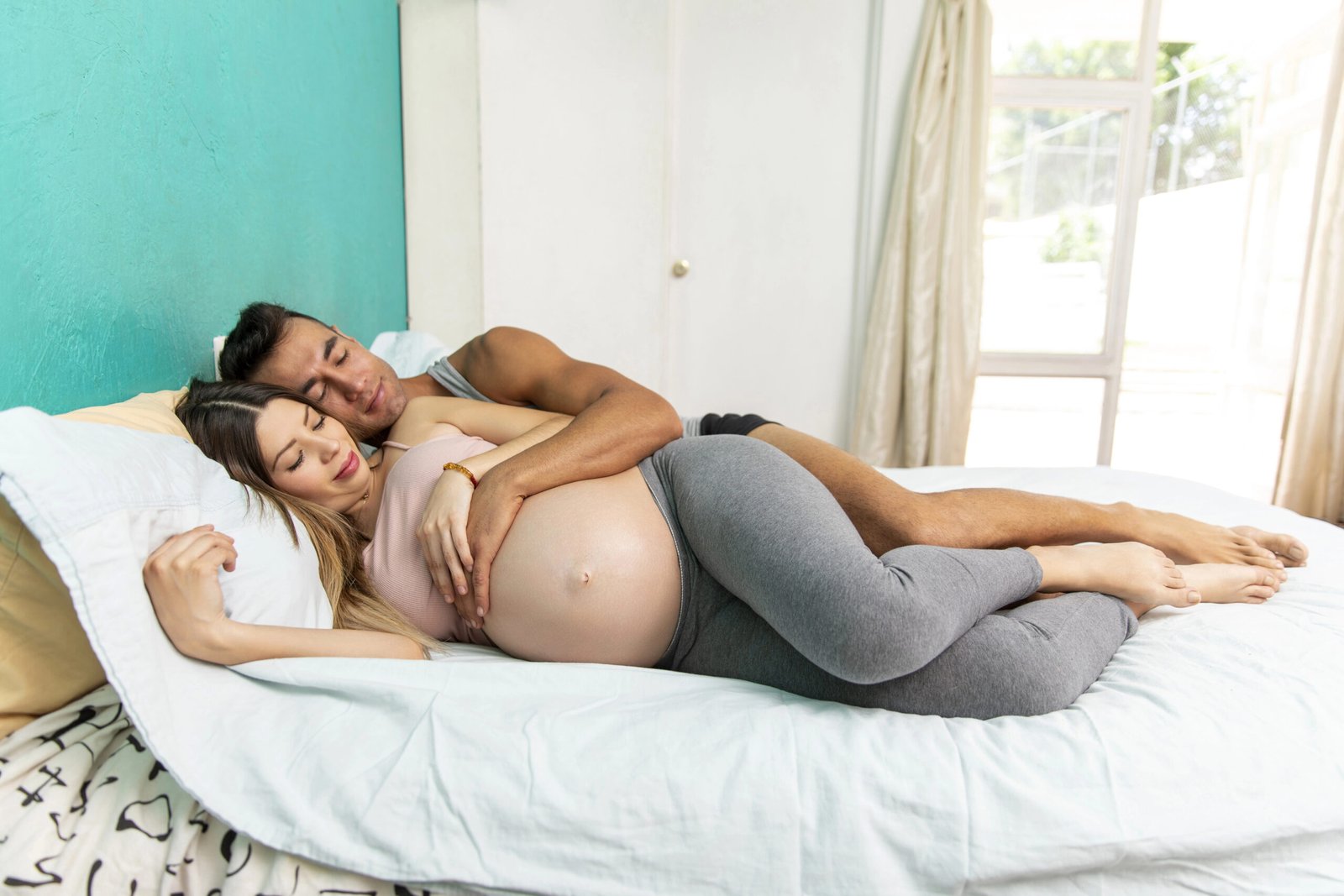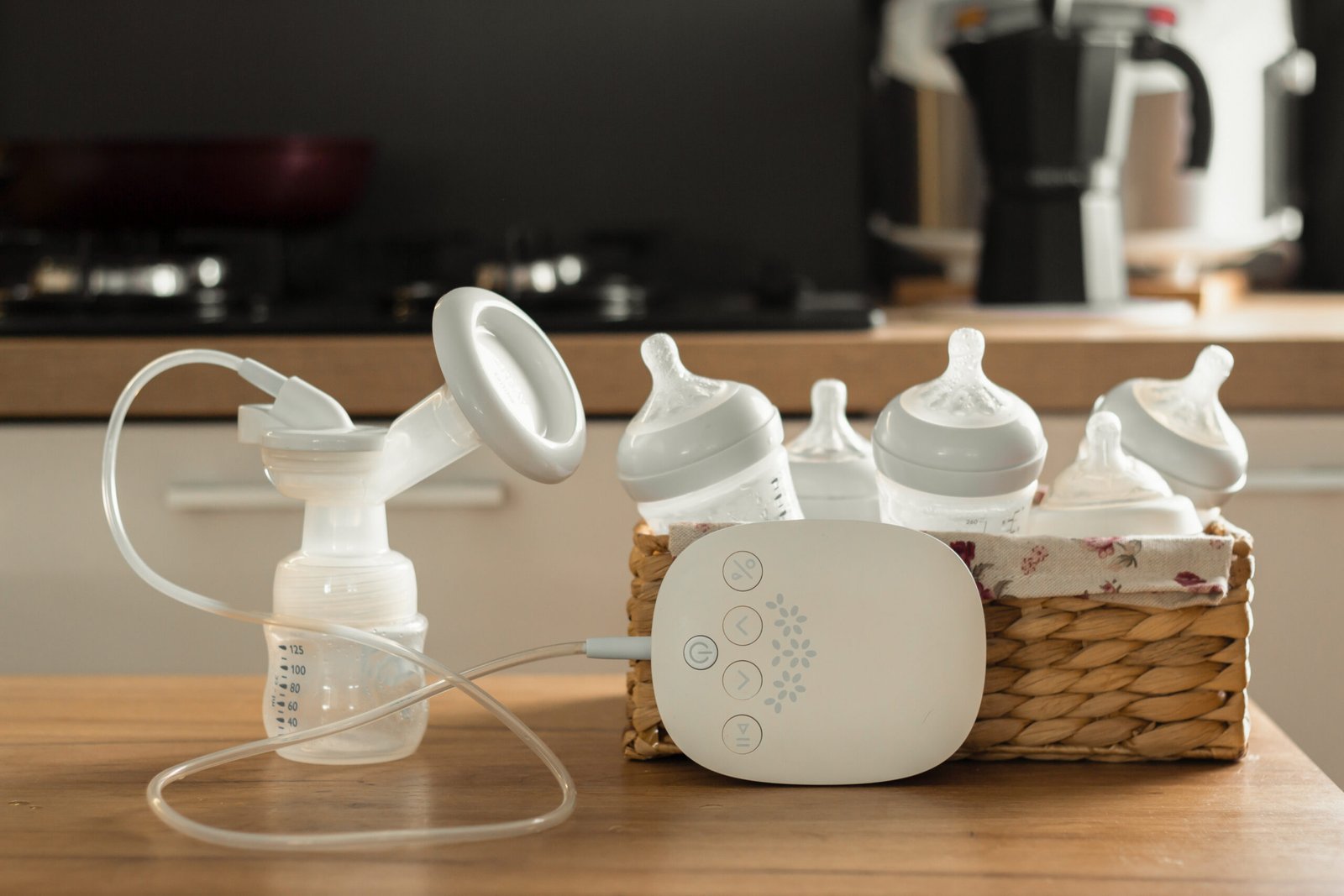Sex During Pregnancy
Safety and General Guidelines
– General Safety: Sexual activity is generally safe during healthy pregnancies without complications
– Protection Mechanisms: The amniotic sac and strong uterine muscles protect the fetus during sexual activity
– Medical Clearance: Always consult with healthcare provider about any specific restrictions based on individual pregnancy conditions
When Sex During Pregnancy Should Be Avoided
Sexual activity may be restricted if you have:
– Vaginal bleeding
– Leaking amniotic fluid
– Cervical incompetence (premature opening of the cervix)
– Placenta previa (placenta covering the cervical opening)
– History of preterm labor or early delivery
– Other pregnancy complications as advised by healthcare provider
Common Physical Changes Affecting Sexual Activity
– First Trimester: Morning sickness, fatigue, and breast tenderness may reduce interest
– Second Trimester: Often brings increased energy and blood flow to pelvic region, potentially increasing desire
– Third Trimester: Physical discomfort, size of belly, and preparation for birth may again reduce interest
Addressing Common Concerns
– Miscarriage Risk: Sex does not cause miscarriage in normal pregnancies
– Normal Symptoms: Mild cramping or spotting after sex/orgasm is common and typically not concerning
– Warning Signs: Severe persistent cramping or heavy bleeding (similar to menstrual period) warrants medical attention
– STI Protection: Continue using condoms if either partner has sex with others or if with a new partner
Comfortable Positions During Pregnancy
– Early Pregnancy: Most positions remain comfortable
– Mid-Pregnancy: Side-lying, woman on top, or rear-entry positions may be more comfortable
– Late Pregnancy: Positions that don’t put pressure on the abdomen become preferable
– General Advice: Experiment with pillows for support and communicate about comfort
Maintaining Intimacy Beyond Intercourse
– Alternative Forms of Intimacy: Cuddling, kissing, massage
– Communication: Openly discuss changing needs and comfort levels
– Emotional Connection: Focus on maintaining emotional intimacy when physical intimacy is challenging
Sex After Pregnancy
Timeline for Resuming Sexual Activity
– Medical Recommendation: Typically wait until after postpartum checkup (usually 4-6 weeks)
– Individual Readiness: Physical and emotional readiness varies widely among individuals
– Healing Considerations: Ensure vaginal tears or episiotomy sites have healed before resuming
– C-Section Recovery: May require additional healing time for incision site
Physical Challenges and Solutions
Common Physical Issues:
– Vaginal Dryness: Hormonal changes, especially with breastfeeding, can cause dryness
– Discomfort or Pain: From healing tears, episiotomy, or C-section incision
– Pelvic Floor Changes: Childbirth can affect pelvic floor muscle tone
– Fatigue: Sleep deprivation and demands of infant care
Solutions:
– Lubricants: Water-based lubricants can help with vaginal dryness
– Pain Management: Take pain relievers before sex if needed
– Pelvic Floor Exercises: Kegel exercises to strengthen pelvic floor muscles
– Pelvic Floor Physical Therapy: Professional help for persistent issues
– Timing: Choose times when you’re rested and relaxed
– Positions: Experiment with positions that minimize pressure on sensitive areas
Emotional and Relationship Aspects
– Changing Priorities: Adjusting to new roles as parents
– Body Image: Accepting and embracing postpartum body changes
– Communication: Honest discussion about needs, concerns, and expectations
– Patience: Understanding that return to pre-pregnancy sexual patterns takes time
– Scheduling Intimacy: Being intentional about making time for connection
Birth Control Considerations
– Fertility Return: Ovulation can occur before first postpartum period
– Breastfeeding: Not a reliable form of birth control for most people
– Timing: Discuss birth control options before delivery if possible
– Options After Delivery:
– Contraceptive implants (e.g., Nexplanon)
– IUDs (hormonal or copper)
– Progestin-only methods (mini-pill, Depo-Provera)
– Barrier methods (condoms, diaphragms)
– Permanent methods (tubal ligation, vasectomy)
– Hormonal Considerations: Combined hormonal methods (estrogen + progestin) typically not recommended until 4-6 weeks postpartum due to blood clot risk
When to Seek Help
– Persistent Pain: If pain during sex continues beyond 3-6 months postpartum
– Emotional Concerns: If anxiety, depression, or relationship issues are affecting intimacy
– Physical Symptoms: Unusual discharge, bleeding, or other concerning symptoms
– Professional Resources: OB/GYNs, pelvic floor physical therapists, sex therapists, mental health professionals
Building a Healthy Sexual Relationship After Baby
Communication Strategies
– Regular check-ins about needs and feelings
– Non-judgmental listening
– Expressing appreciation and affection
– Setting realistic expectations
Rebuilding Intimacy Gradually
– Start with non-sexual physical touch
– Focus on quality time together
– Create opportunities for privacy
– Explore new ways to connect
Self-Care Foundations
– Prioritizing sleep when possible
– Sharing childcare responsibilities
– Maintaining individual identities
– Seeking support from family/friends
Long-Term Perspective
– Understanding that adjustment is normal and takes time
– Recognizing that intimacy evolves through different life stages
– Viewing challenges as opportunities for relationship growth
– Celebrating small steps toward reconnection
Sources
1. American College of Obstetricians and Gynecologists (ACOG) – 2025
2. Mayo Clinic – “Sex during pregnancy: What’s OK, what’s not” – 2024
3. Mayo Clinic – “Sex after pregnancy: Set your own timeline” – 2024
4. Postpartum Support International – “Nurturing Intimacy: A Guide to Sex and Connection After Childbirth” – 2024
5. Cleveland Clinic – “What You Should Know About Postpartum Sex” – 2022




